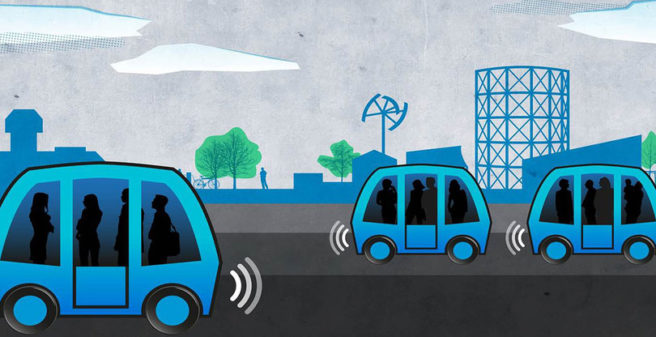
INDUSTRY FOCUS: INNOVATION & TECHNOLOGY
Germany is to take a leading role in autonomous driving. In order to make the most of the great potential of autonomous and connected driving, the Federal Government wants to drive research and development forward and thus make the mobility of the future more versatile, safer, more environmentally friendly and more user-oriented. In addition to autonomous cars, this also includes autonomous buses and shuttles. The latter have already been in trial use in several German regions for several years – but so far only with a speed limit of 15 km/h and only with operational support.
The Federal Ministry of Transport and Digital Infrastructure is working intensively to further improve the framework conditions: On 21 June 2017, the Act on Automated Driving (Eighth Amendment to the Road Traffic Act) already came into force. The core of this was changed rights and obligations of the vehicle driver during the automated driving phase. This means: automated systems (level 3) are allowed to take over the driving task under certain conditions. A driver is still necessary, however, who is allowed to turn away from traffic events and vehicle control in automated mode.
Federal Minister Andreas Scheuer:
“Today we are taking a giant step towards the future: the Bundesrat has passed our law on autonomous driving. This clears the way for self-driving vehicles to be put on the road as a matter of course – as the first country worldwide. We are setting international standards. We are still one step ahead of technical developments. But I can also see from the many funding projects how quickly the manufacturers are making progress in turning their visions into reality. I am certain that we will soon see autonomous driving. With our new law, we are ensuring that Germany is number one in this field.”
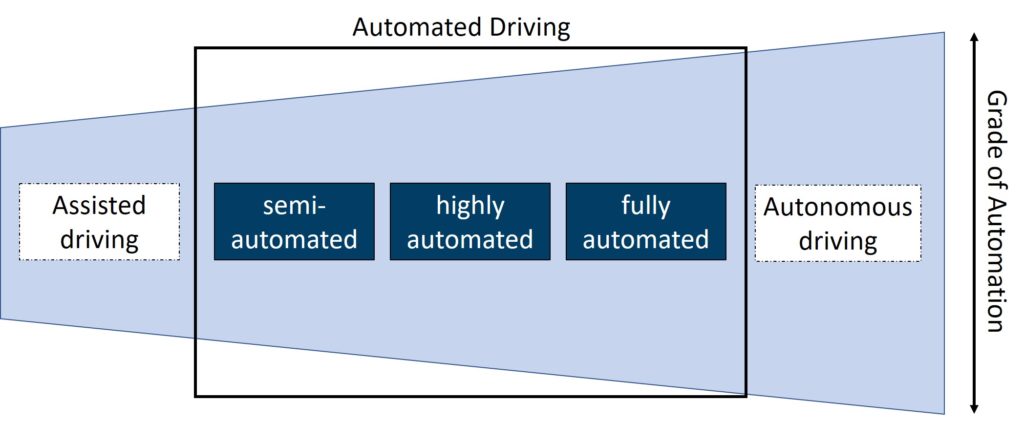
Now comes the next step: With the new law on autonomous driving, a legal framework has been created so that autonomous motor vehicles (level 4) can drive in regular operation in defined operating areas in public road traffic – and this nationwide.
- This makes Germany the first country in the world to bring driverless vehicles out of research and into everyday use.
- The goal is to bring vehicles with autonomous driving functions into regular operation by 2022.
Flexibility is at the forefront of the law: the operation of driverless vehicles is made possible for a maximum number of application scenarios. Only locally limited to a defined area of operation, the various use cases are not conclusively regulated in advance. Individual permits, exceptions and conditions, such as the presence of a safety driver who is always ready to intervene, are thus unnecessary.
The application scenarios include:
- Shuttle transport from A to B,
- People movers (buses travelling on a fixed route),
- Hub2Hub transport (e.g. between two distribution centres),
- demand-responsive services at off-peak times,
- the transport of passengers and/or goods on the first or last mile,
- “Dual Mode Vehicles” such as in Automated Valet Parking (AVP).
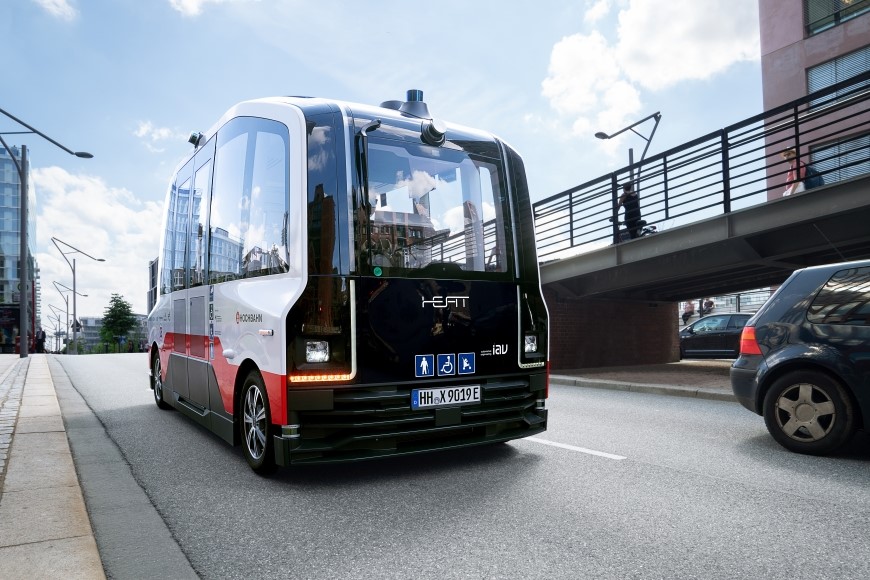
The law newly regulates the following matters, among others:
- Technical requirements for the construction, condition and equipment of motor vehicles with autonomous driving functions,
- Examination and procedure for the granting of an operating licence for motor vehicles with autonomous driving functions by the Federal Motor Transport Authority,
- Regulations relating to the obligations of persons involved in the operation of motor vehicles with autonomous driving functions,
- Regulations relating to data processing during the operation of motor vehicles with autonomous driving functions,
- Enabling the (subsequent) activation of automated and autonomous driving functions of already type-approved motor vehicles (“dormant functions”),
- Furthermore, adapting and creating uniform regulations to enable the testing of automated and autonomous motor vehicles.
At the same time, the automotive industry should intensify its efforts for autonomous driving. As agreed at the third meeting of the “Concerted Action Mobility” on 08.09.2020, the industry wants to consistently use the testing opportunities in Germany to make automated and autonomous vehicles “tangible” – especially in rural areas.
The Federal Ministry of Transport and Digital Infrastructure will evaluate the effects of the law after the end of 2023 – in particular with regard to the developments in the field of autonomous driving in the meantime and the updating of international regulations as well as the compatibility with data protection regulations. The German Bundestag will be informed of the results.
International legislation
The law on autonomous driving is a transitional solution until harmonised regulations are available at the international level. With a view to harmonised markets and standards, Germany has a great interest in the creation of higher-level rules. The Federal Ministry of Transport and Digital Infrastructure will work resolutely to further develop the legal framework at EU and UNECE level.
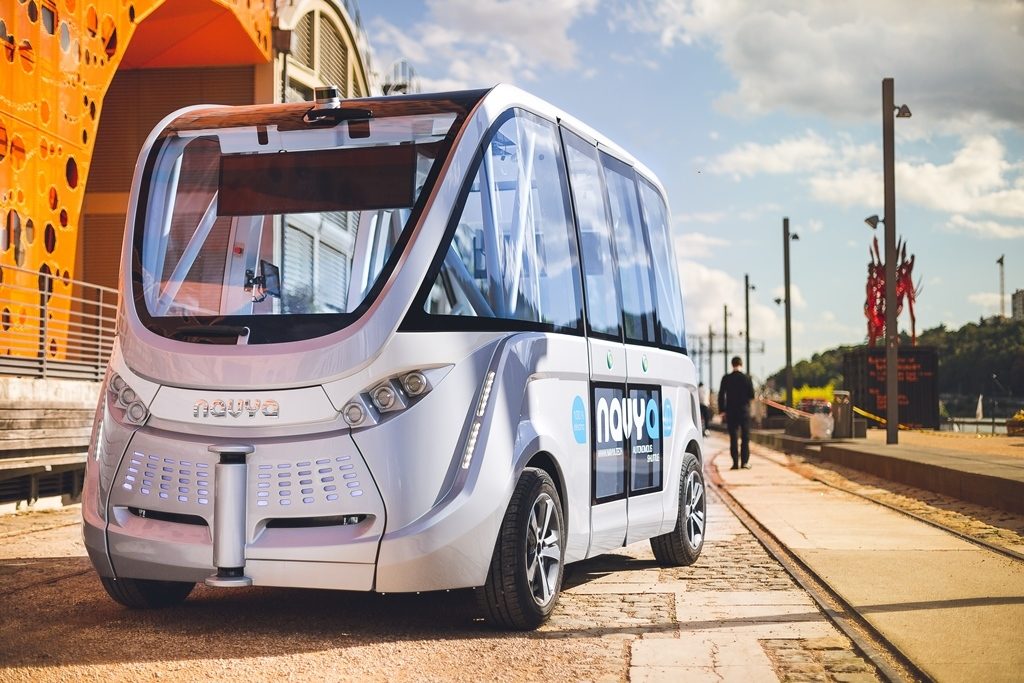
Germany is already an international innovation driver: thanks in part to German initiative, the Level 3 lane-keeping system (ALKS – Automated Lane Keeping System) up to 60 kilometres per hour on motorways, which can be used in traffic jams, for example, was adopted at UN level. Extensions to the UN regulation on ALKS are currently being worked on, also with active German participation. The aim is to enable a speed extension up to 130 kilometres per hour and the lane-changing capability of the system.
The timeplan is as follows:
- The draft bill was approved by the Cabinet on 10 February 2021 and subsequently forwarded to the German Bundestag (federal parliament) and Bundesrat (federal council).
- The Bundesrat commented on the draft bill on 26 March 2021.
- After a public hearing of experts in the lead committee for transport and digital infrastructure (AfVI) in the German Bundestag on 3 May 2021, the AfVI approved the bill subject to an amendment by the coalition factions in its 113th session on 19 May 2021.
- The EU notification procedure initiated in parallel was completed on 10 May 2021.
- The Bundestag passed the bill on 20 May 2021.
- The Bundesrat approved the draft on 28 May 2021.
Now the bill will be executed by the Federal President and promulgated in the Federal Law Gazette. This means that the law could enter into force within the next few weeks.
The draft law can be accessed here.
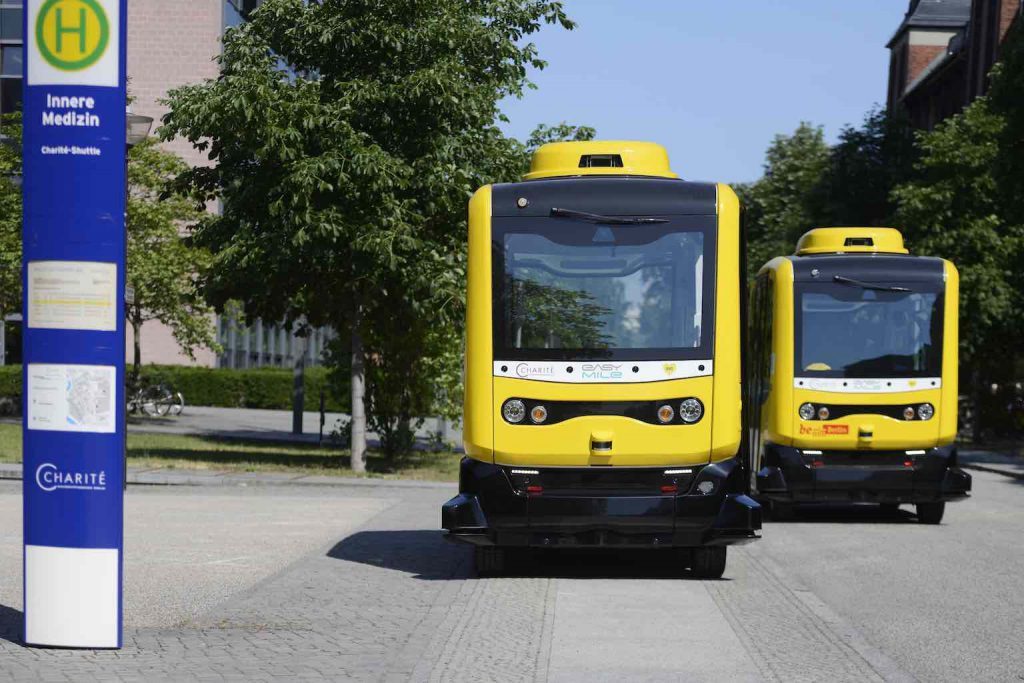
Stages of vehicle automation
- Partially automated driving (stage 2): This is the state of the art today. The applications that the car can take over are becoming increasingly complex – even though the driver must continue to permanently monitor the system and the environment and take back control at any time. These applications include, for example, automatic parking or motorway assistance systems. When overtaking, for example, the motorway assistant takes over automatic lateral and longitudinal guidance up to a certain speed and within certain limits (lane keeping possible).
- Highly automated driving (level 3): The cars take over driving tasks such as braking, steering, lane changing or overtaking for defined applications, e.g. when driving on motorways. Meanwhile, drivers are allowed to temporarily turn away from driving and traffic, e.g. to take care of the children in the back seat. If a situation can no longer be handled automatically, the driver is asked to take over again. The technical regulation required for Level 3 was adopted at UN level with active German participation in June 2020 and came into force on 22 January 2021. The function may only be activated on motorways and is limited to a maximum driving speed of 60 km/h. The driver will be asked to take over again. Currently, work is already underway on extensions to the UN regulation on Automatic Steering Assist Systems (ALKS). The aim is to enable a speed extension up to 130 kilometres per hour and the lane-changing capability of the system.
- Fully automated driving (level 4): With the appropriate design, the system can take over complete control for defined applications, as in level 3, and then no longer needs to be monitored by a physically present driver. This means: The system takes over the complete driving of the vehicle; the vehicle occupants are merely passengers. If the automation mode has to be left, the system prompts the driver or the external technical supervisor to take over. If there is no reaction, the system can independently (unlike level 3) bring the vehicle to a minimum-risk state (for example, bring it to a halt on the hard shoulder). Passengers can also initiate an emergency stop at any time.


[…] The chart below draws from the publication Urban Transport Magazine: […]
[…] The chart below draws from the publication Urban Transport Magazine: […]
[…] The chart below draws from the publication Urban Transport Magazine: […]
[…] The chart below draws from the publication Urban Transport Magazine: […]